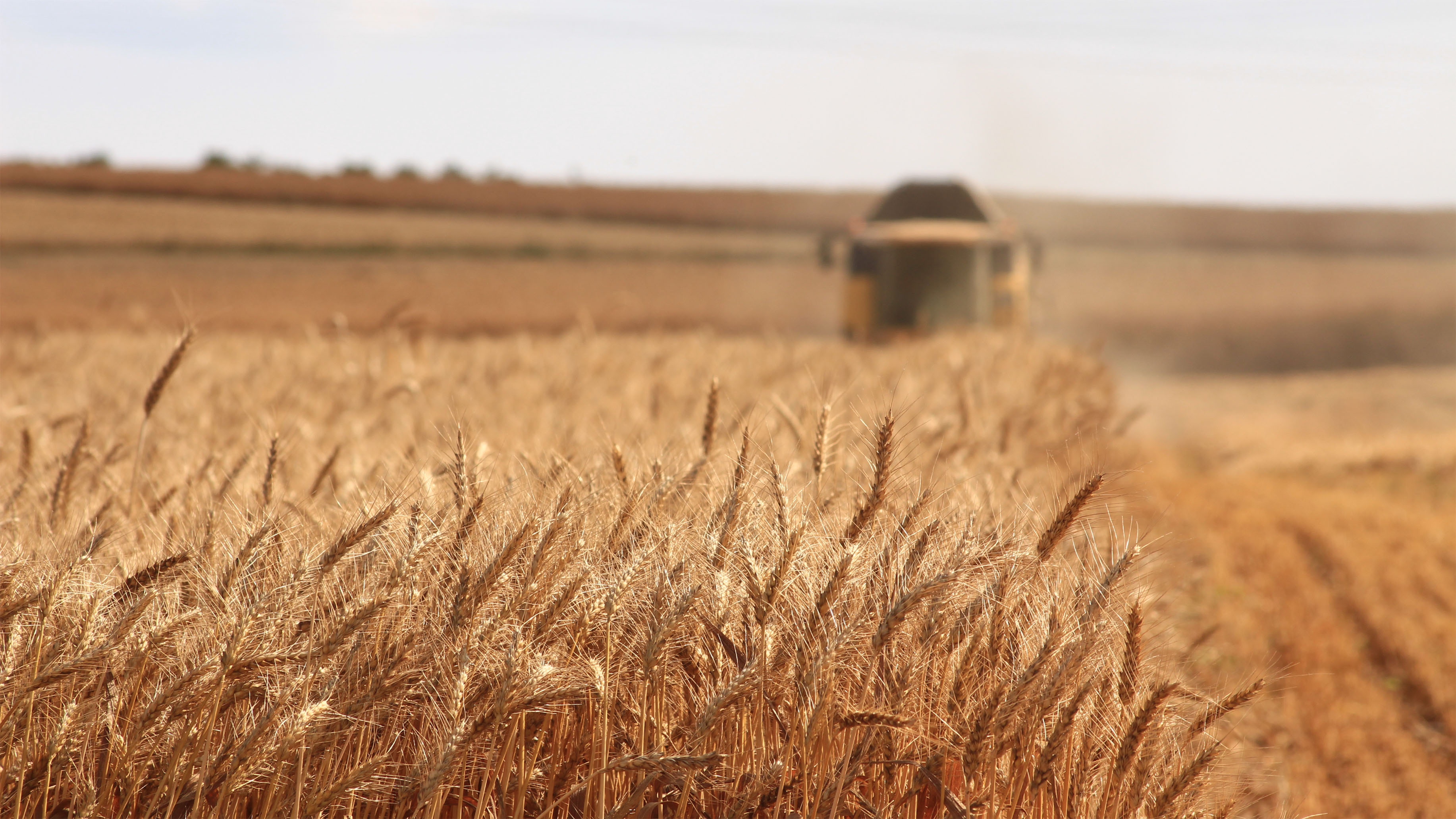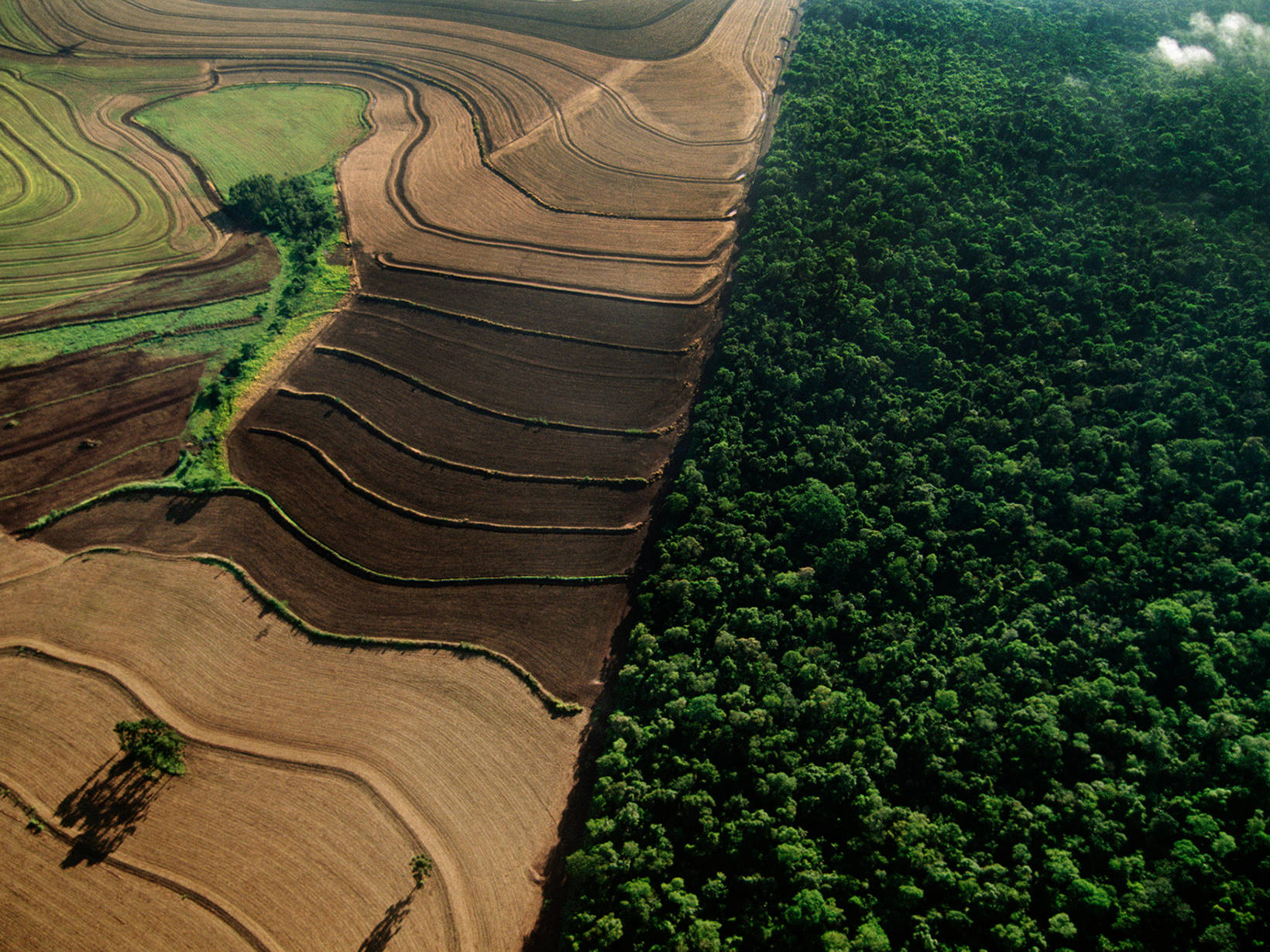Investing in a Sustainable Food System
Four Ways to Unlock the Value of Nature in Agriculture
Our relationship with food is built on our relationship with nature. The food we grow depends on healthy soil, clean water and reliable climate patterns. Moreover, agriculture dominates our planet, with crops and grazing lands covering almost 40 percent of our land and using 70 percent of our freshwater, so nature thriving depends heavily on where and how we grow our food. As the global population increases and food demand grows, the connections between people, food and nature become more important.
And yet, while most of us recognize the vital role of nature in a sustainable global food system, we must also address the challenges. There are signs pointing to positive changes in agriculture and how we produce food. Efforts to end deforestation from agricultural expansion are ramping up, water stewardship is now a high priority, and the UN Sustainable Development Goals have created a common framework for collective action on social and environmental issues. Changing our food system might be the key to not only feeding a growing a planet, but also to ensuring a future where people and nature thrive.
So how do we accelerate the transition to sustainable agriculture? Here are four opportunities where we see some of the greatest potential to provide food and water sustainably:
1) Working at Scale
Agriculture and food systems are vast, accounting for nearly $3 trillion of global GDP and linking the daily decisions of 7.5 billion consumers with more than one billion farmers and ranchers. Yet a relatively small number of global companies develop the primary agricultural inputs, process grain or foodstuffs, and manage retail distribution to consumers in the food system. Increasingly, these companies are aware of their reliance on nature and the positive impact they can have. That’s why we pursue opportunities to collaborate with agriculture and food companies, following our principles, to drive change in the food system. This includes bringing new criteria to guide research and development of new products, and developing innovative market opportunities that enable wide-scale adoption of conservation practices and precision agriculture. To drive greater results, we will need to build on our work with smallholder farmers and pastoralists by engaging corporations and large commercial farms to drive larger scale impact. In combining our expertise on conservation issues with the business minds leading the largest organizations managing agricultural resources, we can achieve greater return on investment for both nature and the economy.
2) Financing Change
Agriculture is capital intensive and access to credit is one of the most important inputs in the production process for farmers and ranchers. By some estimates, expanding food demand will require new investments of $80 billion annually through 2050. Fortunately, these investments can also be a lever for encouraging conservation practices. As investors look for options to improve the social impact of their lending portfolios, financing sustainable agriculture programs is a compelling option. For example, we know some farmers are reluctant to adopt soil health practices due to up-front costs and uncertainty about how quickly they’ll see benefits. Financial incentives factoring in the long-term value of conservation practices can accelerate the adoption of more sustainable practices.
Leveraging our institutional knowledge in finance and land management, The Nature Conservancy (TNC) is partnering with others to develop new ways to finance agricultural production with advanced environmental stewardship requirements. For example, we recently teamed up with Bunge and Santander Brasil to offer long-term loans to soy farmers in the Cerrado of Brazil. The goal is to increase production without clearing native habitat.

3) Disruptive Innovation
Innovation is an utter necessity for food and agriculture. As global population and food demand grew exponentially between 1961 and 2005, we avoided disaster by increasing crop production by 162 percent through improved plant genetics, fertilizers, irrigation, pesticides and other management practices while global cropland area grew by just 27 percent. This spared millions of acres of forest and prairie from conversion, and potentially avoided hundreds of gigatons of greenhouse gas emissions in the process. But such gains also come with tradeoffs – perhaps most obviously to water quality, leading to issues like the dead zone in the Gulf. We can learn from both the scale of positive change and the unintended impacts to people and nature.
More innovation is needed to deal with the challenges ahead. For example, a recent study suggests that climate change will intensify the damage of insect pests. Even with modern pest control strategies, global crop losses are already 20 to 40 percent annually, while resistance to pesticides is increasing. Addressing these issues as we have in the past may come with unintended consequences. Concerns over the impact of pesticides on public health, water quality and beneficial insects have led to increased public scrutiny and regulation. Going forward, the next wave of innovations in this space must address all of these challenges, as well as be more evenly applied to a wider range of crops and countries.
Nature may hold a solution. Innovative farmers are managing their soils and farms for improved biological health and functionality with extraordinary improvements in plant fertility and pest control. The next generation of just-in-time innovation for agriculture may come from the world beneath our feet. In another example, farmers may now use their phones to monitor the water requirements of growing crops or anticipate pest outbreaks built on complex data layers and cloud computing. While these examples are inspiring, the rate of investment in disruptive innovation in agriculture and food systems is far below what is needed to realize our necessary impact. This must change.
4) Empowering Consumers
Consumers increasingly expect that the food they buy should be produced sustainably and equitably. We see positive signs that our food system is moving to meet these expectations. Companies are increasingly establishing responsible sourcing programs and we are contributing scientific insights to shape new criteria for sustainable practices. Overall, we view these effforts as a step in the right direction, though there is more work to do to improve transparency and consistency.
Market signals can help drive needed change. Organic certification, for example, has provided consumers with a clear choice in support of certified agricultural management practices. But while the organic market has experienced rapid growth, it still only accounts for 5 percent of retail food sales in the U.S. The other 95 percent needs attention too, and TNC is working with farmers and other organizations to create standards that are practical and drive continuous improvement.
Just as consumers are using data applications to make different food choices, new remote sensing and digital tools are offering cost-effective and accurate data for farmers to better manage their crops and allow companies and others to incentivize and monitor shifts to sustainable practices. This can improve not only crop yields, but also nutrient management, habitat conversion, and resource efficiency.

Where Do We Go Next?
TNC has a long history working in agriculture, and our agronomists, conservation scientists, biologists and ecologists have worked alongside farmers, ranchers, companies, governments, and other partners around the world to test and implement solutions. While we have seen success with a variety of approaches, we are focusing our efforts in the four areas highlighted above and building on a strong foundation in science and a steadfast commitment to collaboration.
If we are successful, we will protect millions of acres of habitat from agricultural conversion; secure freshwater in hundreds of threatened watersheds; restore millions of acres of degraded lands by improving grazing, soil health and nutrient management practices; and unlock the most cost-effective carbon sequestration and climate mitigation pathways we have in agriculture. To do so requires a clear understanding of the value of nature—not only for its beauty and charm, but also for its ability to provide food and water for the rest of us.
To follow our work on sustainable agriculture, join the conversation on Facebook and Twitter.
-

Global Insights
Check out our latest thinking and real-world solutions to some of the most complex challenges facing people and the planet today. Explore our Insights



